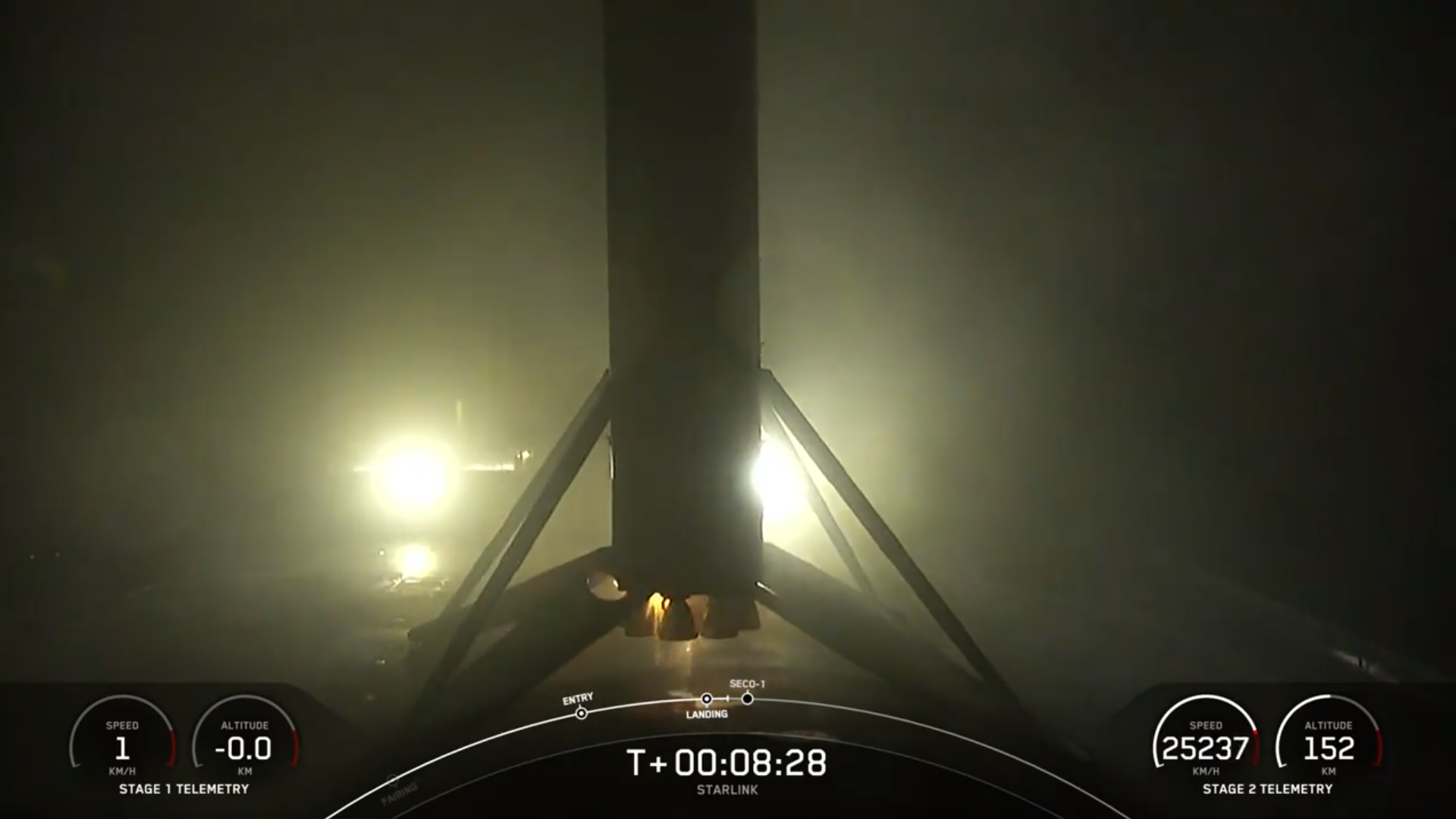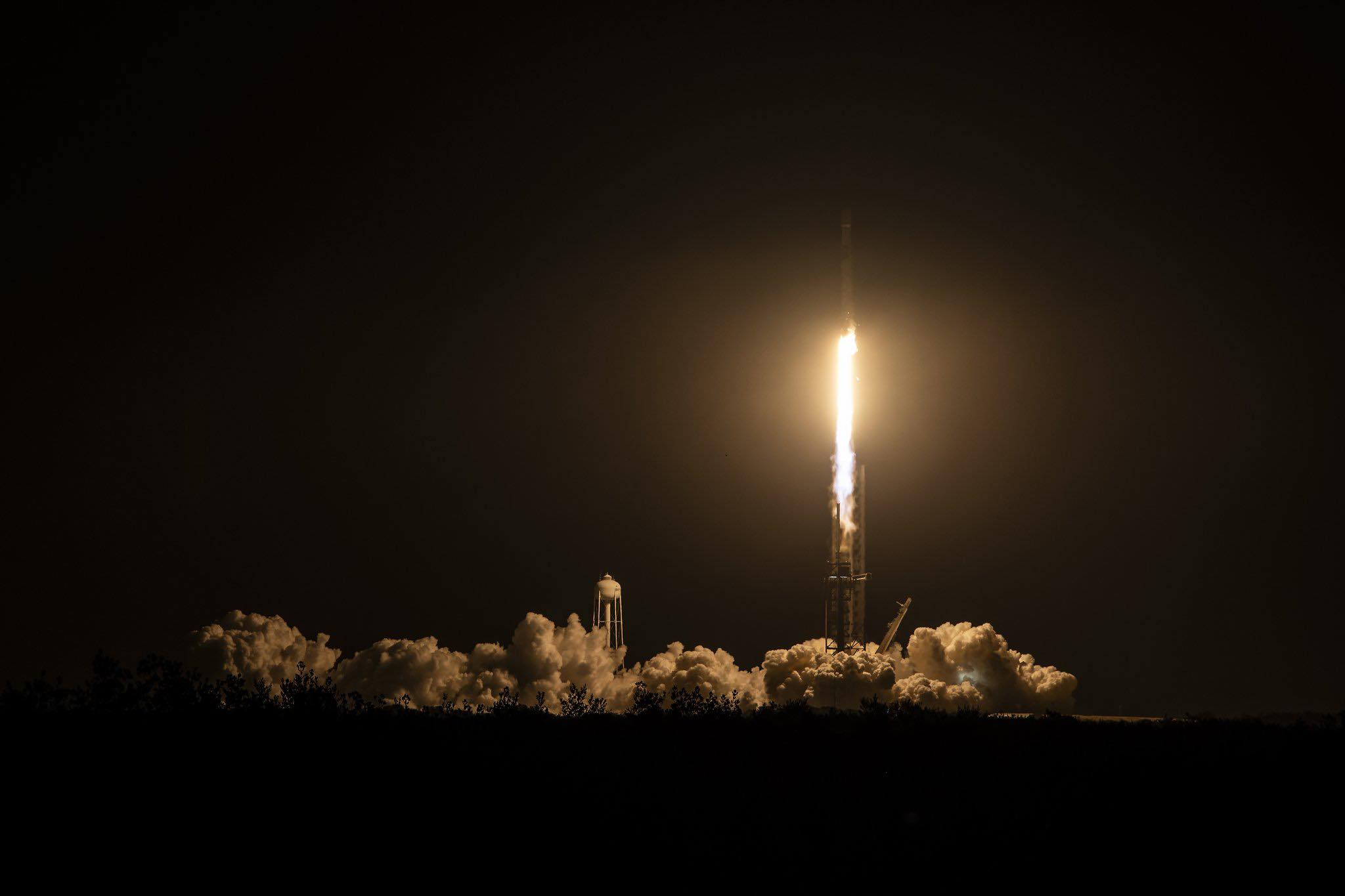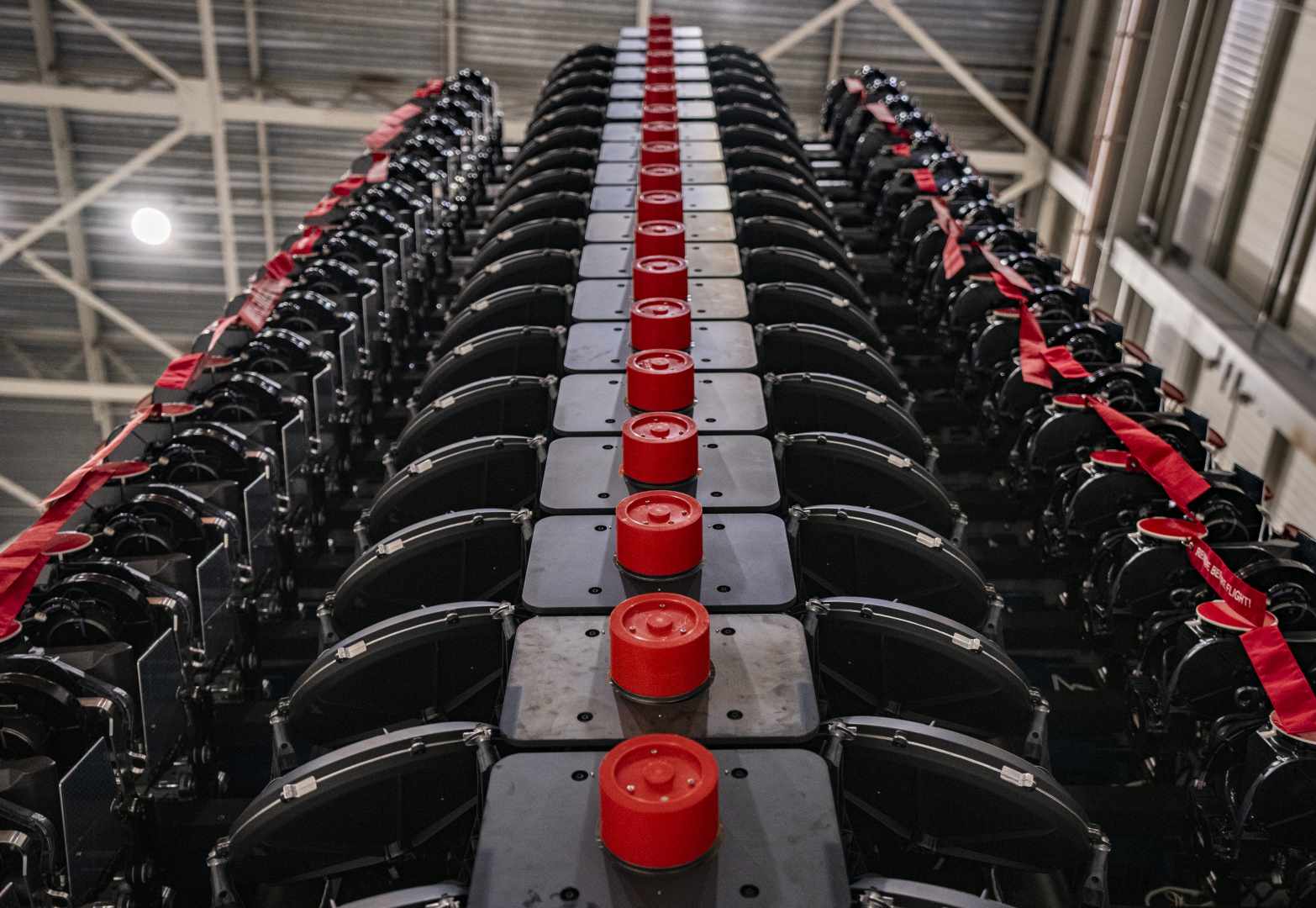
After standing down on Friday due to weather for 24 hours and using up almost all of last night’s expansive “launch window”, the ninth Falcon 9 mission of March speared perfectly for space at 11:09 p.m. EDT Saturday, laden with 23 Starlink internet communications satellites for injection into low-Earth orbit. Veteran B1060—the fourth booster to reach a life-leading 19th launch and the third to do so this year—ascended atop a pillar of golden fire from historic Pad 39A at Florida’s Kennedy Space Center (KSC) just 20 minutes shy of the closure of last night’s almost-four-hour window.


Efforts to get B1060 airborne late Friday, during a four-hour window that ran from 7:57 p.m. EDT through 11:55 p.m. EDT, came to nought in view of poor weather along the Space Coast, characterized by gusty winds, thunderstorms and isolated showers and barely a 20-percent Probability of Go (PGo) conditions for liftoff. “Due to unfavorable weather,” SpaceX tweeted late Friday afternoon, “we’re now targeting Saturday for a Falcon 9 launch of 23 @Starlink satellites from Florida.”
Teams recycled to prepare for a second four-hour launch window extending from 7:39 p.m. EDT through 11:29 p.m. EDT, with Mother Nature anticipated to offer kinder odds of up to 80-percent-favorability. “On Saturday, the low pressure will be tracking up the Eastern Seaboard,” noted the 45th Weather Squadron at Patrick Space Force Base, “leaving the Spaceport with northwesterly winds and isolated, wrap-around showers”, together with a potential risk of violating the Cumulus Cloud Rule and Liftoff Winds Rule.


SpaceX waited until deep into the window before beginning to load the 210-foot-tall (70-meter) Falcon 9 with almost a million pounds (450,000 kilograms) of liquid oxygen and a highly refined form of rocket-grade kerosene—known as “RP-1”—at 10:34 p.m. EDT as the countdown passed its T-35-minute point. Liftoff occurred at 11:09 p.m. EDT, just 20 minutes shy of the closure of Saturday’s window, as B1060 turned the darkened Space Coast instantaneously from night into day.
Making a record-tying 19th launch of her career, B1060 entered service in June 2020 and has now delivered more than 600 Starlinks into orbit, as well as a pair of multi-payload Transporter “stacks”, two geostationary communications satellites, the third Block III Global Positioning System (GPS) mission for the U.S. Space Force and most recently last month’s launch of the Intuitive Machines IM-1 Odysseus lunar lander.


Notably, in February 2021 she became the first booster in the fleet to log two launches under a month apart and was the first Falcon 9 to reach a 13th launch in June 2022. To date, her raft of flown missions have ended with 16 droneship landings and three pinpoint touchdowns on solid ground at the Cape.
B1060’s nine Merlin 1D+ engines blazed brightly for the opening 2.5 minutes of ascent, before the booster separated and descended to a pinpoint touchdown on the deck of the Autonomous Spaceport Drone Ship (ASDS), “Just Read the Instructions”, situated offshore in the Atlantic Ocean. According to SpaceX, it marked the 75th successful landing on JRTI since January 2017.


Over the last seven years, this veteran drone ship has supported 18 returning Falcon 9 boosters, four of which completed seven successful landings on JRTI. Initially introduced as a West Coast drone ship, she supported seven flights out of Vandenberg between January 2017 and January 2019, before moving east for the first of her 68-and-counting missions from the Cape in June of 2020.
Notably, she supported the safe return of B1060 from her first flight with the U.S. Space Force’s GPS III-03 later that same month. Across the past seven years, JRTI has recovered boosters after missions to deliver 41 batches of Starlinks, 13 geostationary communications satellites, four crewed flights carrying space travelers from the United States, Japan, Russia and the United Arab Emirates (UAE)—including the all-civilian Inspiration4 carrying Shift4Payments billionaire Jared “Rook” Isaacman, Sian Proctor, Chris Sembroski and Hayley Arceneaux in September 2021—two Cargo Dragons and South Korea’s first voyage to the Moon.


This particular drone ship also recovered B1058—the one-time ride to space of “Bob and Doug”—after her record-breaking 19th launch last December. Unfortunately, due to high waves and winds, the historic booster toppled over on the drone ship deck and was partially lost at sea.
JRTI subsequently entered dry dock for more than a month of refurbishment and re-entered service in late February to recover another booster following the deployment of Indonesia’s Merah Putih-2 geostationary communications satellite. Since then, she also supported the first-ever “Leap Day” catch of a Falcon 9 on 29 February.


Following last night’s successful 75th booster retrieval for JRTI, the Falcon 9’s second stage conducted a six-minute “burn” of its single Merlin 1D+ Vacuum engine to deliver the 23-strong Starlink payload into orbit. Deployment occurred 65 minutes after launch.
The mission brings to over 400 the sum total of these flat-packed internet-providing satellites launched so far this spring. And more than 6,000 Starlinks have so far been lofted to orbit by 148 Falcon missions since May 2019.


As a network, Starlink enables high-speed and low-latency internet provision to over 70 sovereign nations and international markets in North and South America, Europe, Asia, Oceania and Africa. Landlocked Eswatini—formerly Swaziland—in southern Africa and Honduras and Paraguay joined Starlink in December and SpaceX revealed that network availability was extended to Mongolia in March 2024.
The downsized V2 Mini satellites, first flown in February of last year, boast three to four times greater “usable” bandwidth than earlier Starlink iterations. “V2 Minis include key technologies—such as more powerful phased-array antennas and the use of E-Band for backhaul—which will allow Starlink to provide 4x more capacity per satellite than earlier iterations,” SpaceX explained. “Among other enhancements, V2 Minis are equipped with new argon Hall thrusters for on-orbit maneuvering.”


Florida-based intercity operator Brightline adopted Starlink on its trains in 2023, the first passenger rail service in the world to do so. Additionally, El Salvador’s Ministry of Education has begun integrating Starlink capability into its schools to help close the digital divide between urban and remote rural communities and 50 Rwandan schools are now connected via Starlink’s high-speed internet service.
And in January, SpaceX lofted its first six “Direct-to-Cell” Starlinks, which permit mobile network providers to offer “seamless global access to texting, calling and browsing”, whether “on land, lakes or coastal waters”, without the need to change hardware or firmware. Within six days of that first launch, SpaceX engineers sent and received their first text messages via Direct-to-Cell and as of March Starlink reportedly has about 2.6 million registered subscribers or customers worldwide.


It has been an impressive March for SpaceX so far, not least following last week’s third Integrated Flight Test (IFT-3) of a full Starship/Super Heavy “stack” out of Starbase in Boca Chica, Texas. The 394-foot-tall (120-meter) behemoth roared aloft on 14 March under 16.7 million pounds (7.5 million kilograms) of thrust, completing a full-duration Super Heavy burn profile and a successful hot-staging and full-duration burn by the Starship itself, although both vehicles broke up during their return to Earth.
Added to that list, nine Falcon 9s have now delivered dozens of Starlinks, the 53-payload Transporter-10 stack and crewed and uncrewed missions to the International Space Station (ISS). Significantly, a trio of launches from the East and West Coasts earlier in March set a new record of only one hour and 51 minutes between a pair of Falcon 9 flights and a new record of 20 hours and three minutes between three back-to-back missions.







